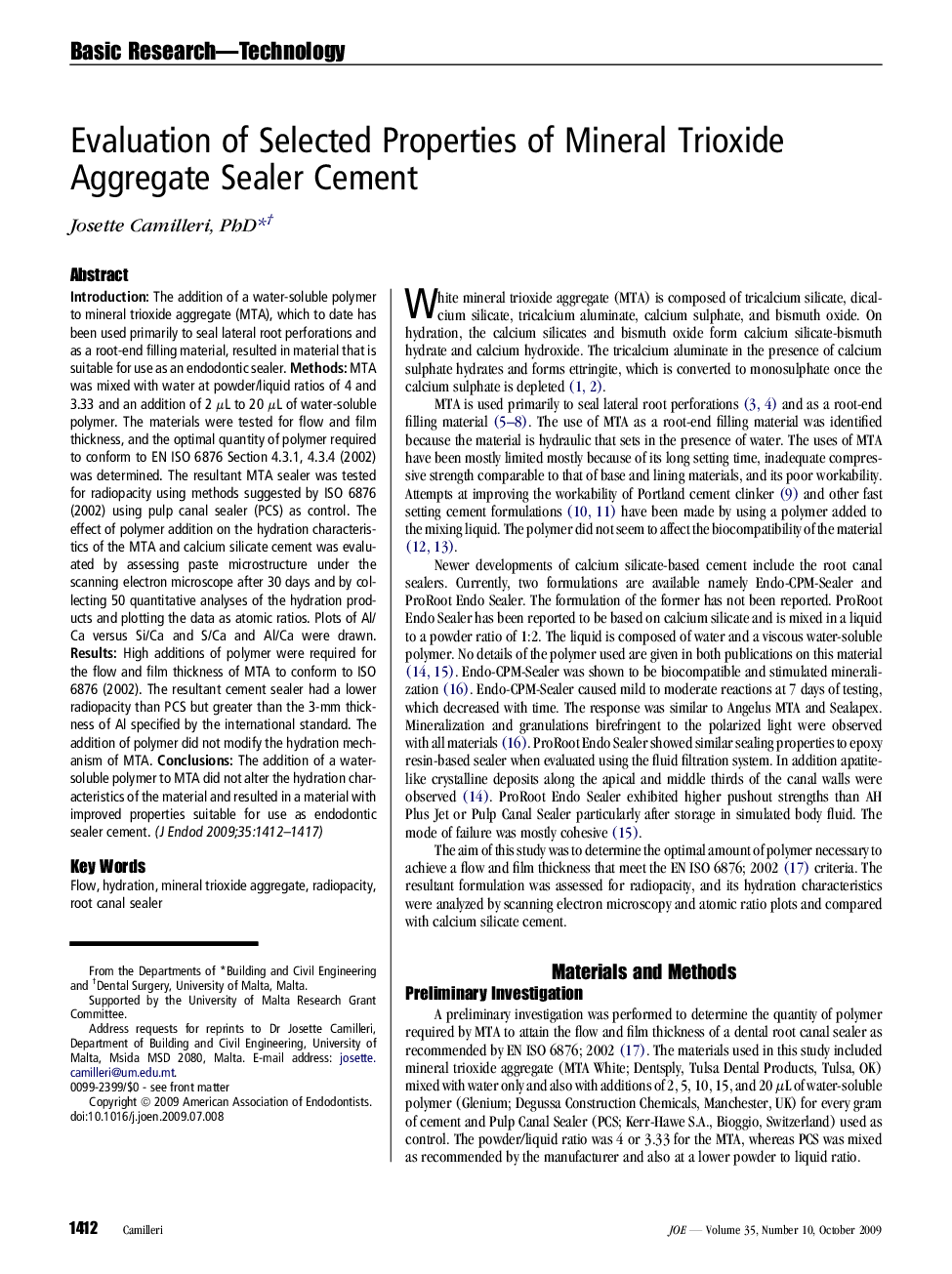| Article ID | Journal | Published Year | Pages | File Type |
|---|---|---|---|---|
| 3148387 | Journal of Endodontics | 2009 | 6 Pages |
IntroductionThe addition of a water-soluble polymer to mineral trioxide aggregate (MTA), which to date has been used primarily to seal lateral root perforations and as a root-end filling material, resulted in material that is suitable for use as an endodontic sealer.MethodsMTA was mixed with water at powder/liquid ratios of 4 and 3.33 and an addition of 2 μL to 20 μL of water-soluble polymer. The materials were tested for flow and film thickness, and the optimal quantity of polymer required to conform to EN ISO 6876 Section 4.3.1, 4.3.4 (2002) was determined. The resultant MTA sealer was tested for radiopacity using methods suggested by ISO 6876 (2002) using pulp canal sealer (PCS) as control. The effect of polymer addition on the hydration characteristics of the MTA and calcium silicate cement was evaluated by assessing paste microstructure under the scanning electron microscope after 30 days and by collecting 50 quantitative analyses of the hydration products and plotting the data as atomic ratios. Plots of Al/Ca versus Si/Ca and S/Ca and Al/Ca were drawn.ResultsHigh additions of polymer were required for the flow and film thickness of MTA to conform to ISO 6876 (2002). The resultant cement sealer had a lower radiopacity than PCS but greater than the 3-mm thickness of Al specified by the international standard. The addition of polymer did not modify the hydration mechanism of MTA.ConclusionsThe addition of a water-soluble polymer to MTA did not alter the hydration characteristics of the material and resulted in a material with improved properties suitable for use as endodontic sealer cement.
